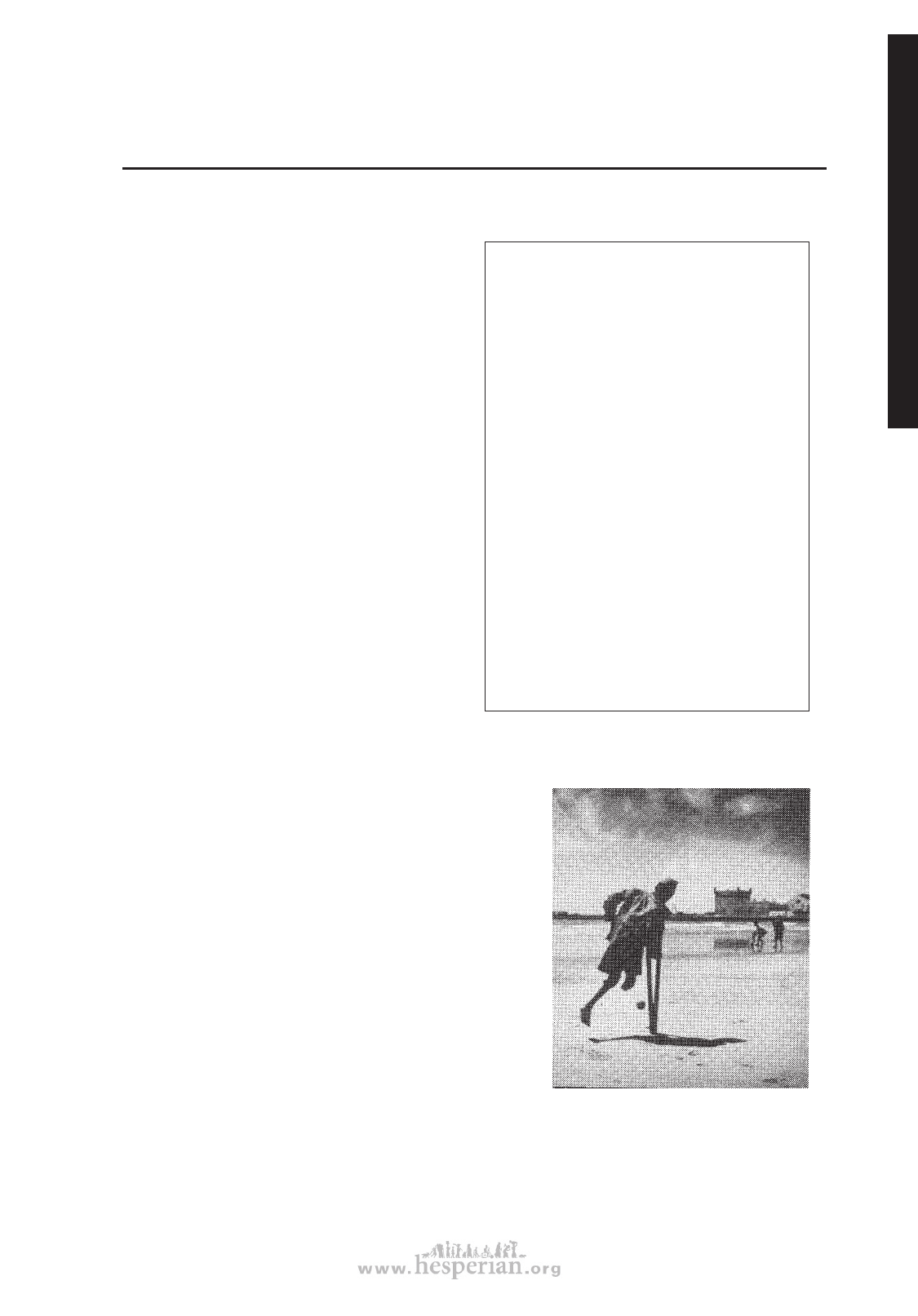
INTRODUCTION TO PART 1
Making Therapy
Functional and Fun
1CHAPTER
3
Most disabled people in the world
live in villages and poor communities
where they never see a ‘rehabilitation
expert’ or ‘physical therapist’. But this
does not always mean that they have
no ‘rehabilitation’ or ‘therapy’. In many
villages and homes, family members, local
craftspersons, traditional healers, and
disabled people themselves have figured
out ways for persons with disabilities to
do things better and move about more
easily.
We have seen examples where local
carpenters, tinsmiths, leatherworkers or
blacksmiths have put together simple
crutches, carts, wooden legs and other
aids. We know parents who have figured
out ways of adapting daily activities so
that their children can help do farm work
or housework—and at the same time get
much of the exercise (therapy) they need.
Sometimes the ‘rehabilitation’ that
families and communities figure out by
themselves works better in their situation
than do methods or aids introduced by
outside professionals. Here are 2 examples:
Two words often used by people
who work with disabled persons are
‘rehabilitation’ and ‘therapy’.
Rehabilitation means returning of
ability, or helping a disabled person
to manage better at home and in the
community.
Therapy basically means treatment.
Physical therapy—or physiotherapy—
is the art of improving position,
movement, strength, balance, and
control of the body. Occupational
therapy is the art of helping a disabled
person learn to do useful or enjoyable
activities.
We speak of ‘therapy’ as an art rather
than a science because there are many
different beliefs and approaches, and
because the human feeling that goes
into therapy is as important as the
methods.
1. In India, I met a villager who had lost a
leg in a house-building accident. Using his
imagination, he had made himself an artificial
leg with a flexible foot out of strong wire with
strips of an old cotton blanket for padding.
After several months, he had the chance to
go to a city where a professional ‘leg maker’
(prosthetist) made him a costly modern
fiberglass leg. The man tried using the new
limb for a couple of months, but it was heavy
and hot. It did not let his stump breathe like
his ‘wire cage’ leg. And he could not squat
to eat or do his toilet, as he could with his
homemade leg. Finally, he stopped using the
costly new leg and went back to the one he
had made. For the climate and customs where
he lived, it was more appropriate.
All children, as much as possible, should
get the exercise they need through daily
work and play. (Morocco. Photo by
Charles Trieschmann)